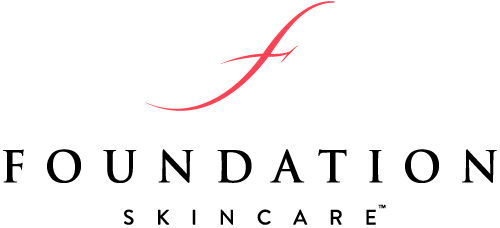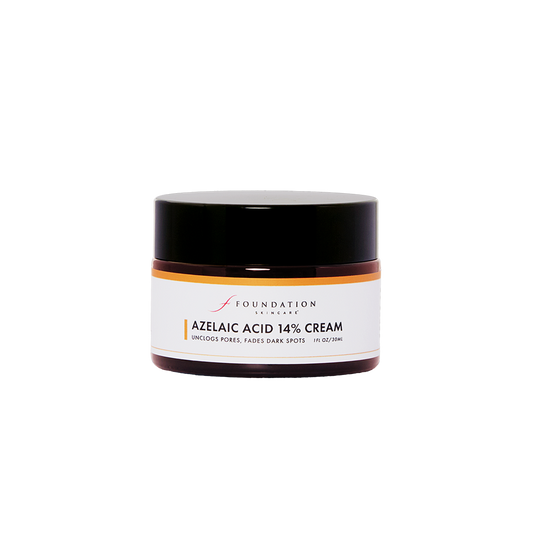You may have heard that chin acne is caused by hormones and forehead acne is caused by stress. But is there any scientific data to back up these claims? And is there anything you can do to promote healthy skin without actually putting anything on your skin?
Read on to learn about acne face mapping, the purported meaning of pimple locations, and what you can do if you have frequent eruptions on a specific part of your face.
Acne Face Mapping & What It Means
Acne face mapping is a practice rooted in Ayurvedic and Chinese medicine. It is based on the theory that health issues within the body relate to where acne is showing up on the face. For instance, forehead acne has been linked to poor digestion, while cheek acne is said to indicate lung issues. Face mapping can also be used when exploring solutions for psoriasis, eczema and other chronic skin conditions.
Though the practice of face mapping dates back at least 3,000 years, there is little scientific proof behind some of its claims.1 However, over time, new face mapping techniques have replaced earlier speculations, and they're supported by dermatology research.
Forehead and Nose
In traditional face mapping, the forehead and nose (or T-zone), is thought to be connected to the intestines, bladder, and heart. Early recommendations would have been to clean up your diet or reduce your stress levels, which are notorious for wrecking your digestion and your skin.
But more recent research has linked T-zone acne to hormonal fluctuations and yes, stress.2 Studies indicate that stress worsens acne flares by triggering inflammation and stalling wound healing.3 The T-zone also has more oil glands, making it a common site for regular breakouts.
Forehead & Nose Acne Treatment Options
In addition to lowering your stress levels, some treatment options to consider for forehead and nose acne include:
- Wash your face every day with a gentle cleanser.
- Apply Foundation Skincare Niacinamide Lotion 10% to balance oil production and reduce inflammation.
- Moisturize with FS Hyaluronic Acid, which works like a magnet for hydration.
- Use FS Azelaic Acid 14%, which reduces skin inflammation and redness, clears up dead skin cells, unclogs pores, and destroys bacteria on skin to help heal and prevent breakouts.
- Protect your skin from sun exposure with an SPF of 30 or higher.
- Be sure to wash your face after exercising or playing sports.
Chin and Jawline
Traditional face mapping and modern dermatology agree that chin and jawline acne is related to your hormones. Androgens, such as testosterone, dihydrotestosterone (DHT), and DHEA, stimulate oil production along the chin and jawline, contributing to clogged pores and acne breakouts.
These eruptions can happen with more frequency around times of hormonal fluctuations, such as puberty, menstruation, and menopause. Women who suffer from medical conditions like polycystic ovary syndrome can also be vulnerable to these types of breakouts. And men who take anabolic steroids or corticosteroid medications, which affect testosterone levels, may experience hormonal acne as a side effect.
Your diet can also affect your chin and jawline, but indirectly. A poor diet of excess sugar and processed junk foods can disrupt your gut health and your hormones, leading to hormonal acne.
Chin & Jawline Acne Treatment Options
Beyond cleaning up your diet, some treatment options for chin and jawline acne include:
- Wash your face every day with a gentle cleanser.
- Apply Vitamin C Lotion to exfoliate dead cells and reduce inflammation. Studies have shown that twice-daily application of vitamin C reduced acne lesions when compared to placebo.4
- Use Niacinamide Lotion 10% to reduce oil and ease swelling and inflammation indicative of cystic acne.
- Apply FS Azelaic Acid 14% to further reduce skin inflammation and redness, unclog pores, and destroy bacteria on the skin.
- During the day, protect your skin from sun exposure with an SPF of 30 or higher.
- At night, apply FS Night Renewal Cream with 2% Granactive Retinoid, which minimizes inflammation and unclogs pores to reduce the frequency of breakouts.
- Some people use oral contraceptives or anti-androgen medications to manage hormonal acne.
- Drink green tea, which is a rich source of polyphenols with antioxidant, anti-inflammatory, and antibiotic properties.
Azelaic Acid 14% Cream
• Brightens skin, fades brown spots
• Unclogs pores, improves texture
Cheeks
In traditional face mapping, cheeks are linked to the respiratory system. Breathing exercises may have been recommended to ease breakouts along the cheeks.
More probable than poor lung health being the cause for acne, is the friction from pillowcases and cell phones, harsh makeup products, or simply touching your face too much. This area of the face is also referred to as the U-zone. In addition to lifestyle habits, genetics, and hormones can also influence acne breakouts on the cheeks.
Cheek Acne Treatment Options
If lifestyle factors are influencing your cheek acne, there are some simple habits you can change. For instance, if you talk on your cell phone too much, use a hands-free device instead. Making sure you clean makeup brushes frequently and trying not to touch your face can also make a difference in your skin health. Other treatment options for cheeks include:
- Wash your face daily with a non-irritating cleanser and pat dry.
- Hydrate skin with FS Hyaluronic Acid.
- Layer products like FS Vitamin C Lotion and FS Niacinamide Lotion 10% to reduce inflammation, redness, and dead skin cells.
- Apply FS Azelaic Acid 14% last in your routine to help destroy bacteria on the skin.
- Use an SPF of 30 or higher to protect your skin from sun exposure.
- At night, apply FS Night Renewal Cream with 2% Granactive Retinoid, which minimizes inflammation and unclogs pores to reduce the frequency of breakouts. Retinoids also help to stimulate collagen, which supports skin renewal and protects the skin.
Hairline
Acne along the hairline is most likely caused by hair products like pomade, mousse, or dry shampoo. As dermatologist Amy Kassouf, MD explains, “Hair products tend to be very waxy and can build up at the hairline and cause flare-ups.”5 Tight headwear can also cause breakouts along the hairline, especially when sweat gets trapped. If you work in environments where grease is abundant, such as a kitchen, you may be prone to this type of acne.
There’s also a chance that fungus is affecting your hairline and scalp. And like any other acne, stress, hormones, and genetics may play a role.
Hairline Acne Treatment Options
Treatment for hairline acne will mostly depend on what you determine is causing the problem. Regulating your stress levels is always good for your skin (and your overall health!), as is eliminating products that may be too abrasive for your skin. Other treatment options for hairline acne include:
- Avoid tight-fitting hats that may aggravate hairline acne.
- Eliminate oil-based hair care products from your routine.
- Follow a healthy skincare routine using the products listed above: FS Hyaluronic Acid, Vitamin C Lotion, FS Niacinamide Lotion 10%, and FS Azelaic Acid 14% as the last step in your routine.
- Some doctors prescribe topical or oral antibiotics to treat hairline acne, antifungals, or even antihistamines if the acne causes itchiness.
Steps To Prevent Acne On Your Face
No matter where the acne appears on your face, there are steps you can take to help prevent another breakout. In addition to the tips we mentioned above, practice the following habits for clearer skin:
- Follow a well-balanced diet full of plenty of fruits and vegetables.
- Hydrate often.
- Take a supplement for more support if you feel your diet is lacking in essential vitamins and minerals that support your skin health.
- Exercise regularly to release toxins from the body, promote blood flow, and support your overall health.
- Never pick at skin.
- Get plenty of sleep.
- Wash your pillowcases regularly.
- Follow a healthy skincare routine.
While traditional face mapping may not totally be backed by science, the philosophy behind the practice is positive. We should approach our skin health holistically, ensuring our internal health is just as balanced as what the outside world can see.
Explore more products in the Foundation Skincare collection.
References:
-
https://www.healthline.com/health/face-mapping#chinese-face-mapping
-
https://www.medicalnewstoday.com/articles/322130#treatment-and-home-remedies
-
https://www.ncbi.nlm.nih.gov/pmc/articles/PMC5722010/
-
https://onlinelibrary.wiley.com/doi/abs/10.1111/j.1473-2165.2010.00480.x
-
https://health.clevelandclinic.org/acne-face-map/





